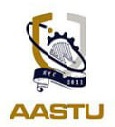Submission Preparation Checklist
As part of the submission process, authors are required to check off their submission's compliance with all of the following items, and submissions may be returned to authors that do not adhere to these guidelines.- The submission has not been previously published, nor is it before another journal for consideration (or an explanation has been provided in Comments to the Editor).
- The submission file is in OpenOffice, Microsoft Word, or RTF document file format.
- Where available, URLs for the references have been provided.
- The text is single-spaced; uses a 12-point font; employs italics, rather than underlining (except with URL addresses); and all illustrations, figures, and tables are placed within the text at the appropriate points, rather than at the end.
- The text adheres to the stylistic and bibliographic requirements outlined in the Author Guidelines.
Original Research Article
Journal of material and process technology publishes original manuscripts with sufficient data and detailed analyses on material preparation, characterization, and application as well as biological, physical, and chemical processes that involve the materials.
Review Article
Journal of material and process technology publishes Review Papers on both mature and emerging areas of materials and process technology. Review Papers should go beyond a simple listing or summary of previous research. They should provide comprehensive, authoritative, and critical reviews of published results that have not been comprehensively and critically reviewed in the past three to four years.
Communication
Journal of material and process technology publishes communication with brief reports of data from original research that will be interesting to many researchers, and that will likely stimulate further research in materials and process technology.
Privacy Statement
The names and email addresses entered in this journal site will be used exclusively for the stated purposes of this journal and will not be made available for any other purpose or to any other party.
